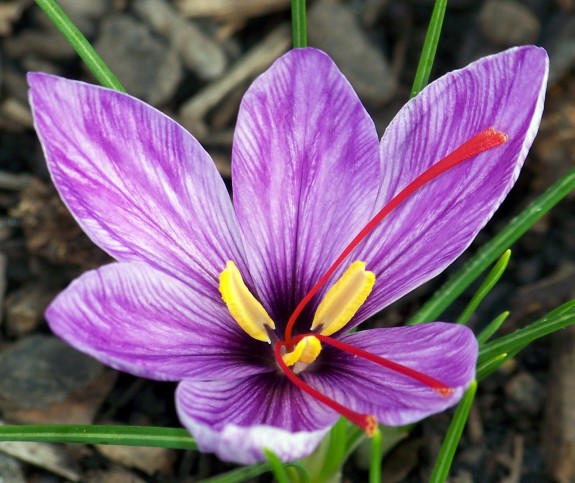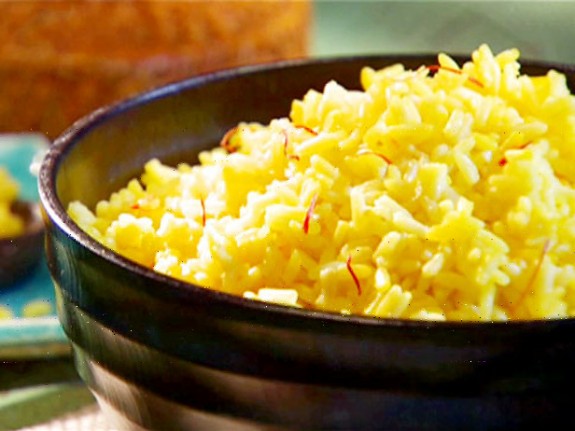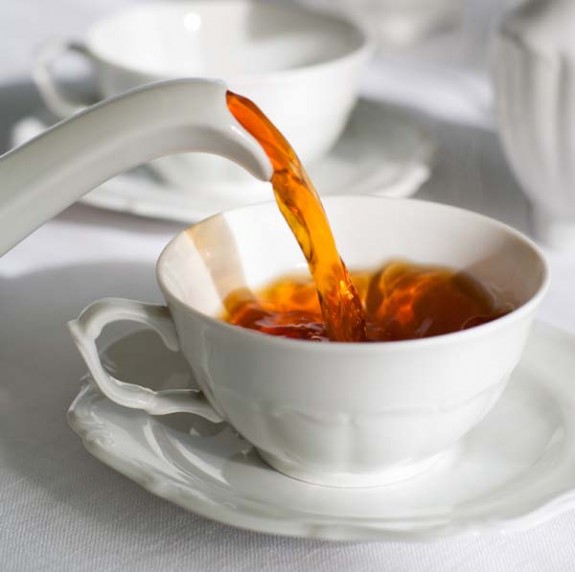If you’ve ever tasted the bold, aromatic flavor of saffron spice, you may understand why it is so highly valued amongst chefs of all ethnicities.
Here are some fun facts about this fancy spice:
- Saffron is best grown in Mediterranean climates, where the whether is warm but not too wet. Greece, Spain, and Kashmir are popular saffron-growing regions.
- Saffron threads are supposed to be long, red, and brittle with yellow streaks. If it looks too uniformly red in color, it might have been dyed.
- Saffron can cost as much as $15 per gram! Many stores in India sell it for $7-$8 per gram – which is quite expensive when converted to Rupees.
- Persian saffron strands, which are known for their bright color and strong fragrance, can sell for around $100 per ounce.
Origins
Saffron, while originating in Oriental Asia, is commonly used in Greek, Spanish, Mediterranean, Indian, and Pakistani dishes. The floral spice – literally derived from the stigma of the crocus sativus linnaeus flower – gives off a gold and red color and light, sweet flavor.
Cultivation
The Rose of Saffron itself is a beautiful flower – with light purple petals and bright red stigmas. But the rarity of these saffron stigmas is what makes this spice the most expensive spice in the world, ranging from $2000 to $10,000 a pound!
These flowers only bloom for about one week in a whole year, requiring lots of delicate care and perfect cool, dry climates to blossom. Each flower also yields only 3 stigmas of saffron, which then have to be picked by hand and dried before being packaged and sold. With such intensive growth and harvesting requirements, it’s estimated that out of an acre of purple crocus flowers, only one pound of saffron will result!
Culinary Uses
After all that high maintenance and cost, it’s easy to ask yourself “why bother?!” when it comes to using saffron in your cooking. Some chefs simply opt to use the bright yellow turmeric to color their food, but more dedicated South Asian dishes require the difficult-to-describe but unbeatable floral taste of saffron strands.
The distinct aroma and flavor of those cherished bright red saffron strands are useful in a variety of Indian and Pakistani dishes. From saffron rice to burfis and sweets, saffron is versatile enough to add a unique kick to both savory and sweet items. Common uses of saffron in food include in creamy sauces (such as butter chicken) and dessert halwas.
Saffron can be mixed into dishes as a powder or in its original thread form. Powdered saffron is useful for flavoring sweets, soups, and ice creams, while saffron threads can be carefully sprinkled over biryani or gulab jamun to add an elegant decor and fragrance.
Medicinal Uses
The expensive spice can really be worth its money if you incorporate its many medicinal uses too. Saffron is a known digestive aid, a menstrual pain relief, and even an aphrodisiac! Anybody – from the insomniacs to the feverish – can make use of saffron’s relaxing and detoxifying qualities.
Saffron can be ground into a paste for direct application or consumption during illnesses, or it can be enjoyed steeped into hot water for a fragrant and soothing tea.
If you’re considering adding this fabulous flower to your spice rack – I say go for it! Saffron is bound to enthuse your guests with its classy display and subtly rich taste. Glam up your rice, embellish your kulfi, or fight off your cold – saffron is a worthy investment for day-to-day exuberance!
There’s so many fancy fables about saffron – so naturally, the lavish spice is perfect for a rani’s big day! Keep it in mind for your wedding inspiration.
Photos courtesy of npr.org, michaelthefrugalvegetarian.blogspot.com, and exirsaffron.com.
What’s your favorite use for saffron?




